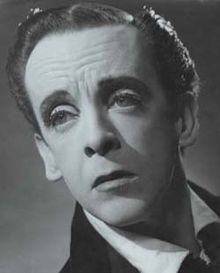 |
| Birmingham Royal Ballet
(c) John Lambert 2016: all rights reserved
|
Birmingham Royal Ballet, The Taming of the Shrew. Birmingham Hippodrome, 18 June 2016
John Cranko created some of his most best known works including The Taming of the Shrew for the Stuttgart Ballet but he trained at Sadler's Wells School and started his career at the Sadler's Wells Ballet part of which is now the Birmingham Royal Ballet. Despite its shared connection with Cranko it was only on the 16 June 2016 (some 47 years after the premiere in Germany) that the Birmingham Royal Ballet was able to stage this work in this country.
For me that is a matter of regret because Cranko appeals to me more than any other choreographer and The Taming of the Shrew is the work that I love most. Even more than The Prince of the Pagodas, Onegin and Pineapple Poll. So if anybody were to ask me which is my favourite ballet I would have to say that it is this one. I first learned about the work in Dance and Dancers in 1969 and have longed to see it ever since (see Cranko's "Taming of the Shrew": Now's our chance to see one of the Ballets everyone should see before they die 21 Sept 2013). I got my chance on 23 Nov 2013 when the Stuttgart Ballet visited London (see Stuttgart Ballet's "Taming of the Shrew" - well worth the Wait 25 Nov 2013).
I think the reason I love the ballet so much is that I love the play and the reason I love the play is that I love paradox. I began to appreciate the paradox upon seeing snippets of Meryl Streep's performance as Katherina in New York City many years ago (see Kiss me Petrucchio (1981) Meryl Streep and Raul Julia - A Documentary from 1981 on YouTube). I never saw that show but I do remember her explaining the work in a feminist context. I am also enjoying the serialization of Anne Tyler's The Vinegar Girl on Radio 4 just now. In her programme note, Pas de Dukes, Katherine Barber who runs Tours en l'Air (see Tours en l'Air a Really Useful Resource 23 Feb 2014) draws parallels with Romeo and Juliet:
"But The Taming of the Shrew is in many ways the 'anti-Romeo and Juliet.' Silly (with an inspired silliness and comic. It mirrors its solemn and tragic sibling sometimes scene for scene: a tender wedding with the wise Friar Lawrence becomes a farcical free-for-all with a cartoonish priest; bridesmaids who are an ironic harbinger of death in the one are chased around by a baulky and belligerent bride with a limp lily in the other; a pas de trois depicting exuberant high spirits of young men in Verona becomes a vaudeville trio of Chaplinesque buffoons in Padua. Both ballets end in tears, though in one they are tears of sorrow and the other tears of laughter."An interesting idea and one that had not occurred to me before though I caution against drawing too many parallels because all love stories and the ballets derived from them share at least some of those elements.
Although the Birmingham Royal Ballet uses Cranko's choreography and Kurt-Heinz Stolze's score the designs are different. Elisabeth Dalton designed the sets and costumes for Stuttgart (see her obituary in The Stage) while Susan Benson designed Birmingham's. One the whole I think I preferred Benson's as they gave an even greater freshness and touch of joy to the Birmingham production. In a post to BalletcoForum Barber suggested that Birmingham Royal Ballet had used the National Ballet of Canada's costumes and it is certainly the case that Benson contributed the designs to the Canadian production (see The National Ballet's Ballet Notes for its 2007 season which incidentally also publishes Barber's article sub nom The Taming of the Shrew: Shakespeare in Motion).
The reason I took notice of the ballet in 1969 is that Cranko deployed a stellar cast:
- Marcia Haydée – Katherina (Kate)
- Richard Cragun – Petruchio
- Susanne Hanke – Bianca
- Egon Madsen – Gremio
- Heinz Claus – Lucentio
- John Neumeier – Hortensio.
The dancers in Saturday's matinee were pretty impressive too.
Kate was danced by Elisha Willis. I count myself as one of her biggest fans and I had been led to believe by a clipping in the Birmingham Mail that Saturday's would be her last performance (see Roz Laws Birmingham Royal Ballet star Elisha Willis on ditching dancing for stitching 14 June 2016). I have since learned that she will dance at least one more show in Bristol. I shall miss Willis and I wish her all the best for the future.
Willis was partnered brilliantly by Iain Mackay. Jenna Roberts was a sweet but not too sugary Bianca while Brandon Lawrence was her Lucentio. I also enjoyed Rory Mackay's performance as Gremio (particularly his wooing of Bianco and his discomfiture by Kate), Chi Cao's as Hortensio and Delia Matthews's and Angela Paul's as their wives and Jonathan Payn's as Baptista. However, I should say a special word for Valentin Oloyyannikov who doubled as the publican and priest. He is a great character dancer and his characterization of the cleric was nothing short of brilliant.
The play has inspired Jean-Christophe Maillot to create another version of The Taming of the Shrew for the Bolshoi which was screened to British audiences in January (see Competition for Cranko: The Bolshoi's Taming of the Shrew streamed from Moscow 25 Jan 2016). I enjoyed the screening very much and I look forward to seeing it live when the Bolshoi bring it to Covent Garden.

